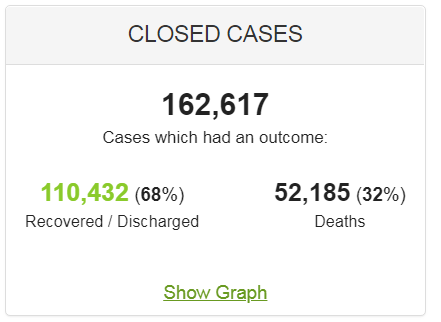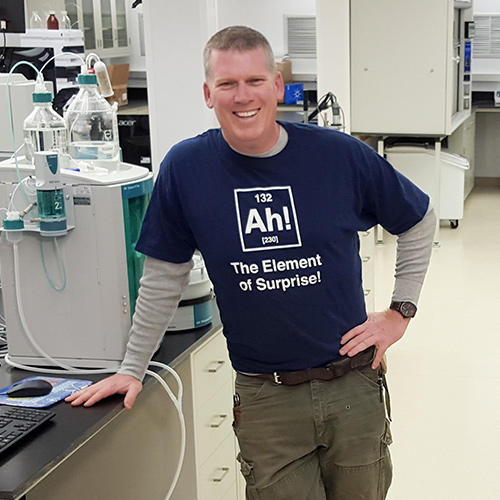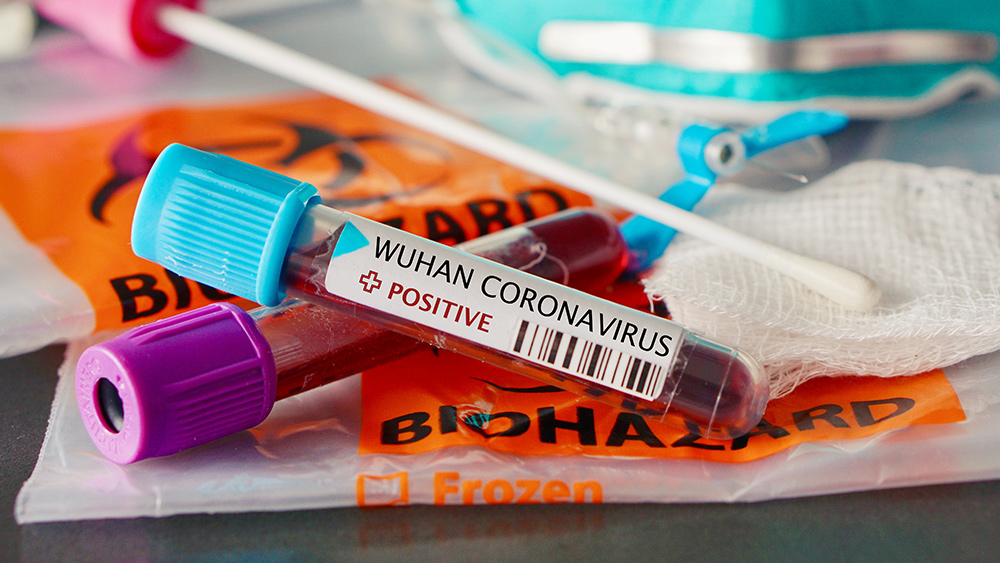
They achieve this false result by comparing the CDC's numbers for flu fatalities to the estimates of the coronavirus case fatality rate based on projecting the results of questionable antibody tests to the population at large. (i.e. using the "Stanford study" which has already been completely ripped to shreds by dozens of scientists.)
For example, they say the regular flu infected 35,520,883 Americans last year and killed 34,157. This is from the CDC's web page for the 2018-2019 flu season. This comes to a 0.096% fatality rate, which is usually rounded to 0.1%. We've used this number, too, pointing out the regular flu kills about 1 in 1,000 people (which is the same as a 0.1% death rate). But even we haven't been specific enough in using this number, since it's actually killing 1 in 1,000 people who are symptomatic. It kills far fewer when you consider the entire infection pool for the seasonal flu, which is about four times larger than the number who are symptomatic (see below).
This number -- 0.1% -- is then often compared to the calculated "case fatality rate" of coronavirus, which people are calculating by taking the total number of deaths as the numerator, and then using the total number of projected infections as the denominator. They are getting the total number of projected infections from the already-debunked "Stanford study," which produced conclusions that were almost entirely a product of false positives due to inaccurate antibody tests made in China. But if you believe the Stanford study and ignore its horrific, fraudulent elements (such as the fact that study subjects were self-selected, so the entire sample wasn't even randomized), you might believe that 13.9% of the population of New York has already been infected.
Then you might take the total deaths in New York -- which is right now 21,283 -- and divide that by the projected 13.9% of the New York population (20.1 million), which comes to nearly 2.8 million people. Therefore, you might argue (and some people do), that the coronavirus death rate in New York is really 21,283 / 2.8 million, which comes to 0.76%.
So from that math, you might say something like, "Well, the coronavirus death rate is only about 8 times worse than the regular flu," since 0.76% is about 8 times higher than 0.96%.
This is how the argument has been stated by those who are trying to claim the coronavirus isn't really any big deal, even as the deaths have now climbed over 50,000 in the USA.
But there's a massive, obvious problem with all this.
The oft-cited 0.1% "death rate" for the regular flu is only counting cases that are symptomatic, so it's a dishonest comparison with coronavirus "infections"
The regular flu kills about 1 in 1,000 people only when you count cases as being those who are "symptomatic." In other words, the regular flu death rate of about 0.1% is the "Case Fatality Rate" (CFR), not the "Infection Fatality Rate" (IFR).
To calculate the Infection Fatality Rate (IFR) of the regular flu, you need to know the total number of people infected and divide that into the total number of people who died from the regular flu.
See, when you look at the CDC's flu burden web page, and you see the 35 million number for the 2018-2019 flu season, that's "Symptomatic Illnesses." In other words, it's only the people who showed symptoms. It does not count the asymptomatic carriers of the regular flu.
If you count the asymptomatic carriers of the regular flu, that number is obviously much larger. If someone ran around the country testing everybody for antibodies of the regular flu, they would find that a huge percentage of the population has those antibodies. In fact, according to a study published in The Lancet Respiratory Medicine, three-quarters of regular flu infections are asymptomatic. From ClinicalAdvisor.com:
In a population-based comparison of serologic and weekly symptom monitoring data, only 23% of people not vaccinated against influenza who had serologic evidence of infection also reported respiratory or flu-like symptoms, Andrew C. Hayward, MD, from University College London, and colleagues reported.
So for every 100 people who have the regular flu, only 23 show symptoms and are counted as being "sick." So the 0.1% Case Fatality Rate (CFR) for the regular flu is only considering those who showed symptoms and got sick, not all the people who were actually infected.
Because the number of people who were infected is far larger than the number of people who were symptomatic, the Infection Fatality Rate (IFR) result is a far lower percentage than the CFR percentage, given that triple the number of the "symptomatic" cases actually exist as asymptomatic carriers who are infected and will have antibodies.
Thus, if the regular flu has 35 million symptomatic cases, there are really 140 million total infected people, with about 105 million of those showing no symptoms and not being considered sick.
Therefore, using rounded numbers:
CFR: Case Fatality Rate of the regular flu = 35,000 / 35 million or about 0.1%. (About 1 in 1,000 symptomatic people die.)
IFR: Infected Fatality Rate of the regular flu = 35,000 / 140 million. 0.025%. (About 1 in 4,000 infected people die.)
People are incorrectly comparing the coronavirus IFR to the regular flu CFR
When people talk about coronavirus deaths, however, they are talking about the IFR, or the Infection Fatality Rate. They are calculating the total number who died and dividing by the total number who they say have been infected, even if those people show no symptoms.
So using the New York numbers from above, which are projections from the (bad) Stanford study, the IFR for the coronavirus comes to 0.76%.
That is 18 times higher than the IFR of the regular flu, which is 0.025%.
In other words, even if you believe the antibody tests for the coronavirus that were falsified in the Stanford study, it still means the coronavirus is 18 times more deadly than the flu, when comparing IFR to IFR.
The mistake people are making is comparing the CFR of the regular flu to the IFR of the coronavirus. That doesn't compute. It's not apples to apples.
In fact, even we have referred to the CFR of the flu as the "death rate" or the "fatality rate." That's why we all need to tighten up our terminology and our math here. From now on, we will be using CFR and IFR accordingly, in order to offer more clarity about which numbers are being considered.
Right now, most people are conflating CFR with IFR, failing to recognize the difference. This is happening across both the mainstream media and the independent media, and it shows why everyone needs to be more specific and more mathematically correct as we work to gain an accurate understanding of the real risks associated with the coronavirus. (Which isn't "just the flu.")
Calculating the CFR of the coronavirus
To really compare apples to apples, then, we need to calculate the CFR of the coronavirus. Remember, the CFR means "Case Fatality Rate" and it answers the question, "What percentage of people who have symptoms end up dying?"
That means we need to know how many people are symptomatic from coronavirus infections, as well as the number who have died. But how many people are actually symptomatic with the coronavirus in the USA?
We can't just use the "confirmed infections" number of roughly 925,000, since that number includes people who tested positive (usually via PCR) but don't necessarily have symptoms. Lots of people who test positive are asymptomatic, in other words. In fact, most are. It's already widely known that around 80% of the people who get infected are asymptomatic.
But to be generous to the naysayers for demonstration purposes, let's use the 925,000 number as "symptomatic" cases -- even though we know the real number of symptomatic cases is lower.
Out of the roughly 925,000 cases that we are temporarily considering to be "symptomatic," under 10% have recovered (about 95,000) and 52,000 have died (worldometers.info).
That means the Case Fatality Rate in the USA for the coronavirus is at least 5.6%. And that's 56 times higher than the CFR for the regular flu.
In reality, the CFR is surely higher than 5.6% since the 925,000 denominator is too high for "symptomatic" cases. We might reasonably say the number of symptomatic people is half that, or about 463,000. If that's true, the CFR climbs above 10% for the coronavirus.
There's little doubt, in fact, that among symptomatic coronavirus cases, the death rate is at least 10%. That makes it 100 times more deadly than the flu, and it's in line with the case fatality rates reported in Italy, which is known to have been the source of a highly deadly strain that now dominates the infections, hospitalizations and deaths in New York.
Once again, this reveals how the coronavirus is far more deadly than the regular flu. And that's probably why the "resolved cases" in the USA currently shows a fatality rate of 32%.

Comparing apples to apple: A summary of CFR vs. IFR for both the regular flu and the coronavirus
To summarize:
CFR: Case Fatality Rate of the regular flu = 35,000 / 35 million or about 0.1%. (About 1 in 1,000 people die.)
IFR: Infection Fatality Rate of the regular flu = 35,000 / 140 million. 0.025%. (About 1 in 4,000 people die.)
CFR: Case Fatality Rate of the coronavirus = 52,000 / 925,000 or at least 5.6%, and we know the 925,000 is too high, so the real result is actually higher and most likely over 10%, given that most of the 925,000 are actually asymptomatic.
IFR: Infection Fatality Rate of the coronavirus = 52,000 / ? (you can plug in your best numbers here of estimated projections of the number who you think are actually infected). If you think the actual number is, say, 10 million, then the IFR would be 0.5%. Since we don't have a reliable number on the actual number of infections, this denominator is more difficult to nail down.
So comparing apples to apples, with scientific integrity:
CFR of regular flu is 0.1%
CFR of coronavirus is 5.6%
IFR of regular flu is 0.025% IFR of coronavirus might be 0.5% (or choose the number of infected you think works best in the formula above)
The naysayers are comparing the IFR of the coronavirus to the CFR of the regular flu
What the denialists are doing to deceive people is that they compare the IFR of the coronavirus to the CFR of the regular flu. That makes the coronavirus look a lot less dangerous. But it's the wrong comparison.
Check around. Look at all the publishers, pundits and websites claiming the coronavirus is "no worse than the flu." They're using the wrong numbers. They're all using the 0.1% "death rate" of the regular flu, but comparing it to the infection numbers of the coronavirus.
Even worse, when you point out they're using the wrong numbers, they refuse to change them. This has been on ongoing phenomenon through all this: Nobody across the independent or mainstream media seems to have any desire to correct bad numbers or produce accurate math and science on this. Mostly, they're just pushing political agendas and latching on to any bad science they can find that seems to "prove" their point.
One of the best people who brings clarity to this whole situation -- and whose podcast led to this article -- is Chris Martenson from PeakProsperity.com. Here's his video that explains some of this, although I've expanded on it considerably, bringing in a lot of new numbers. However, the full hat tip goes to Chris and his readers for bringing this to light:
https://www.youtube.com/watch?v=rN_YpFhdii4
Stay informed and stay alive. Read Pandemic.news for accurate analysis, solid numbers and truly independent reporting.

Mike Adams (aka the "Health Ranger") is the founding editor of NaturalNews.com, a best selling author (#1 best selling science book on Amazon.com called "Food Forensics"), an environmental scientist, a patent holder for a cesium radioactive isotope elimination invention, a multiple award winner for outstanding journalism, a science news publisher and influential commentator on topics ranging from science and medicine to culture and politics.
Mike Adams also serves as the lab science director of an internationally accredited (ISO 17025) analytical laboratory known as CWC Labs. There, he was awarded a Certificate of Excellence for achieving extremely high accuracy in the analysis of toxic elements in unknown water samples using ICP-MS instrumentation.
In his laboratory research, Adams has made numerous food safety breakthroughs such as revealing rice protein products imported from Asia to be contaminated with toxic heavy metals like lead, cadmium and tungsten. Adams was the first food science researcher to document high levels of tungsten in superfoods. He also discovered over 11 ppm lead in imported mangosteen powder, and led an industry-wide voluntary agreement to limit heavy metals in rice protein products.
Adams has also helped defend the rights of home gardeners and protect the medical freedom rights of parents. Adams is widely recognized to have made a remarkable global impact on issues like GMOs, vaccines, nutrition therapies, human consciousness.
Please contact us for more information.























